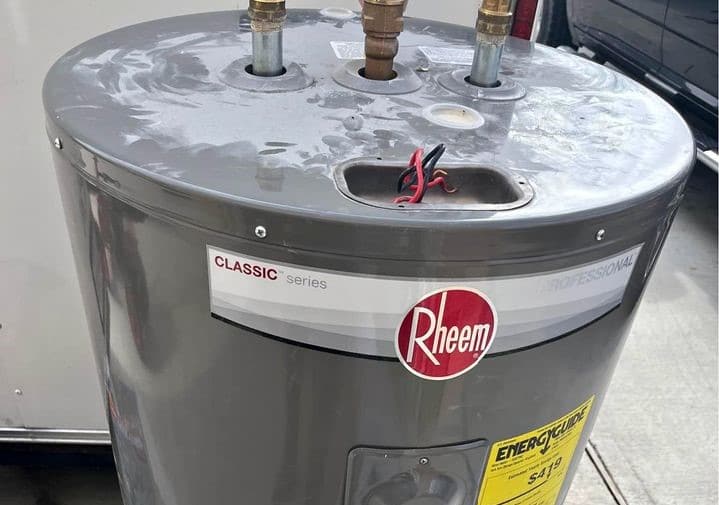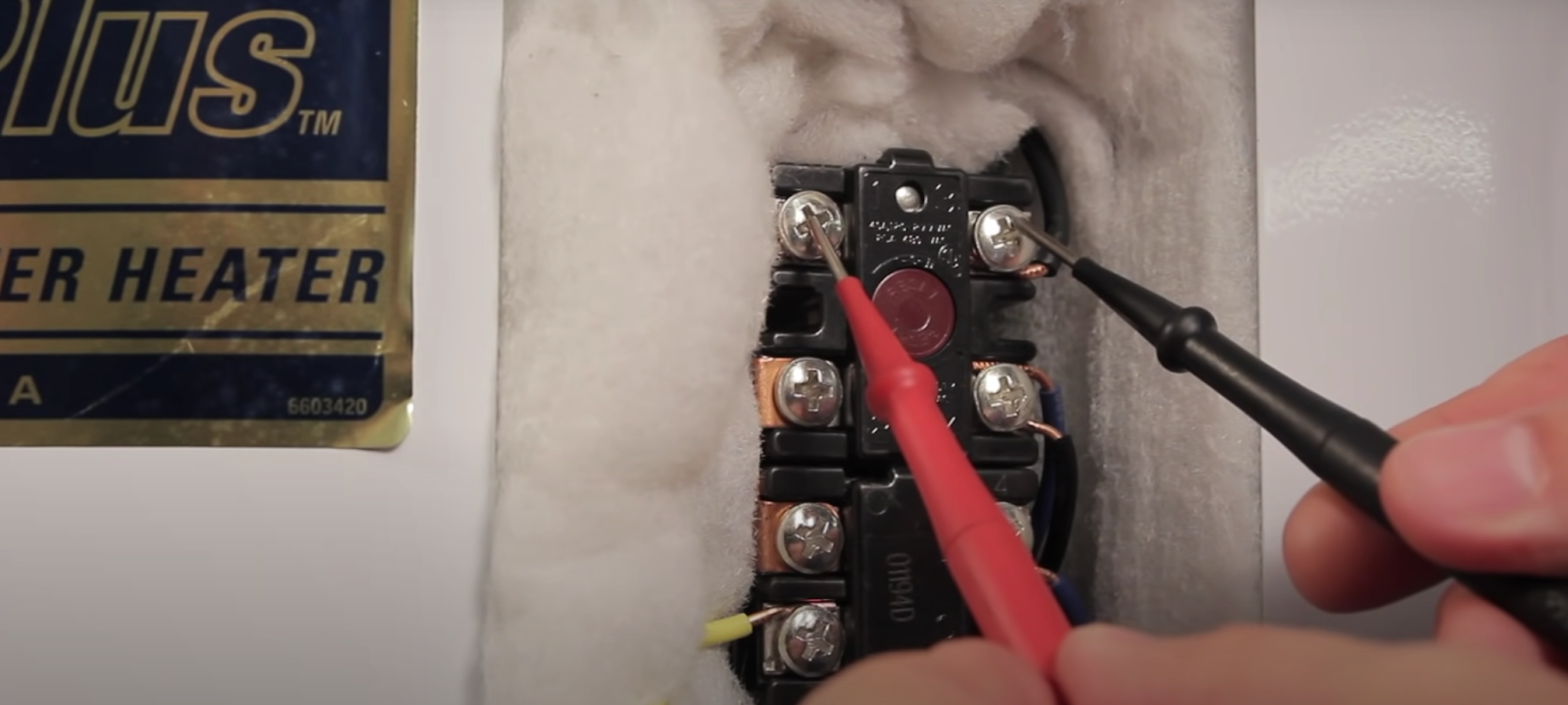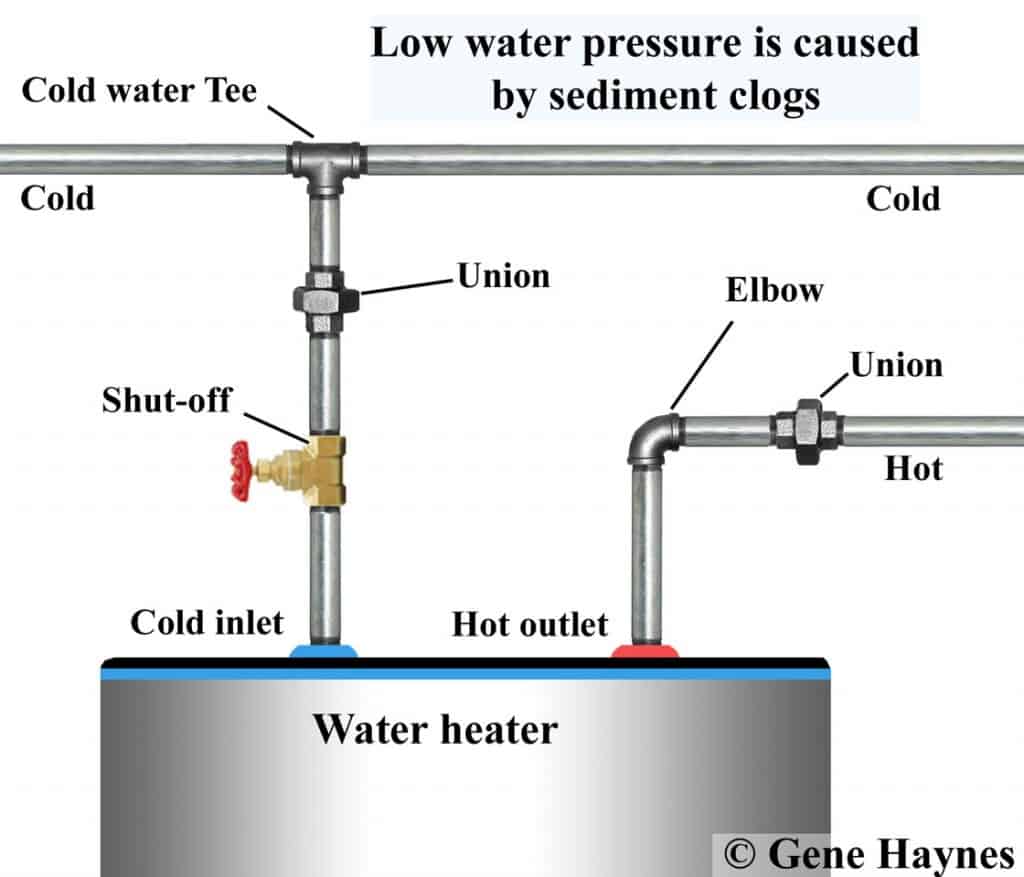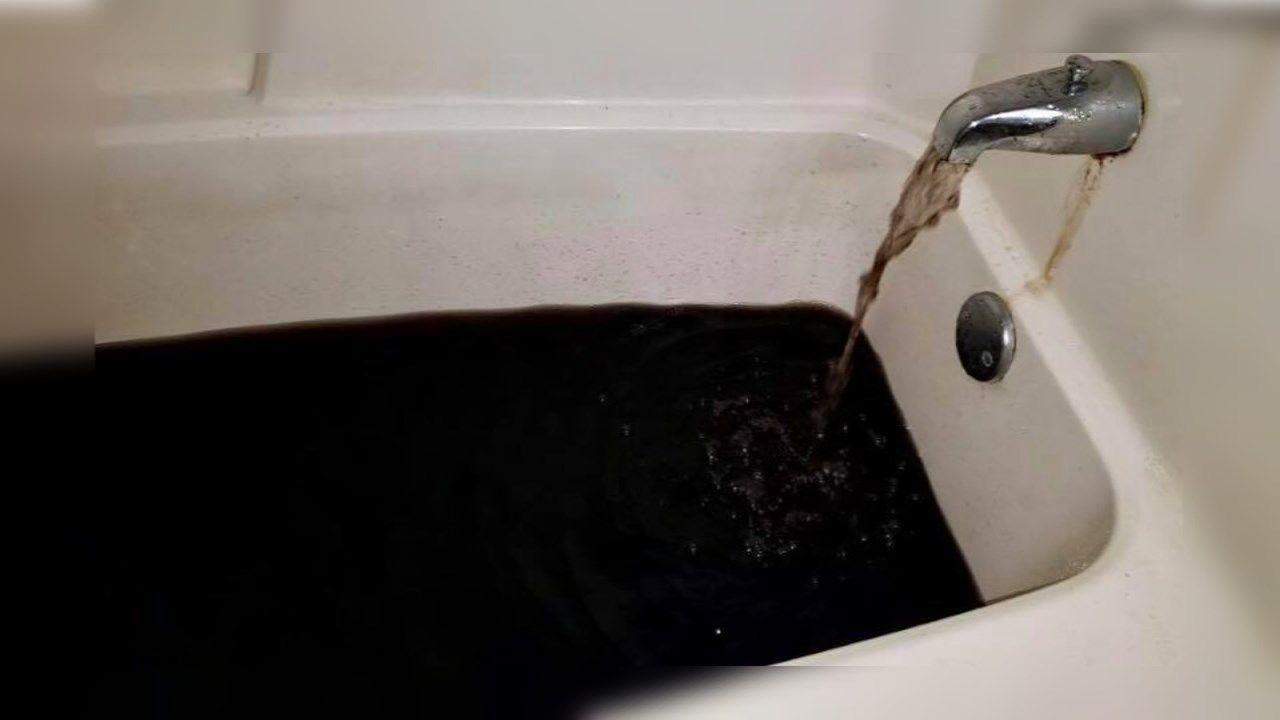Here’s a situation. You’ve spent hours replacing your water heater’s heating element and thermostat, and it’s still giving you cold showers.
Yes, it’s very normal. Despite replacing the main components, your water heater can still disappoint you.
But luckily, you can fix it without paying much extra! And I have observed multiple reasons why they don’t work after the replacement—for instance, issues with wiring, resetting, rust, weather, and whatnot.
That’s why I’ll share some possible reasons and their solutions for you to understand and relate best to your situation.
How Long After Replacing A Water Heater Element Should It Take To Heat Up?
Before jumping to the secondary solutions for fixing your water heater, ensure you perform the first step correctly and patiently. So, after replacing the lower heating element, upper heating element, and thermostat of your water heater, wait a few hours to a day for the replacement to become beneficial.
But why is My Hot Water Heater Not Heating Properly?
To leave no stone unturned for fixing any issue, you must look for every possible reason. And the same goes for water heaters. There are many reasons for their malfunctioning, but troubleshooting is easy and specific. Here are 13 possible fixes:
Faulty Wiring
Opening, replacing, and refixing an electric water heater isn’t a cakewalk for everyone, and you can miss out on places while connecting the wires. When a wire is not connected to the elements properly, it can create a faulty circuit, and no circuit means no power for heating. Typically, faulty wiring can happen when you rewire the elements and thermostat after replacing them.
FIX
The best thing you can do is hire an electrician to do the job. And I recommend this because working with loose connections looks hazardous, and I don’t want anyone to have electric shocks.
But if you are comfortable in self-fixing the whole thing, here are some steps for locating the circuit points:

- Switch off your house circuit breaker for your water heater and inform everyone around you or add a note.
- At the top of your water heater, you’ll see a junction box for connecting the wires. So, remove the wire and screw present on your junction box.
- Once your junction box is available for access, take your wires and connect the black wire to the black and the red wire to the red wire of the junction box. Ensure you use wire nuts for connecting.
- Connect the green screw with the ground wire.
- Make sure none of the wires and nuts is loosely connected. Reconnect and tighten any loose wire found. Finally, close the cover of the junction box.
If the colors of your wires are different, ensure you test each separately.
Power Supply Issues
If the hot water heater is not getting enough electricity after replacing elements and thermostat, it may not be able to generate enough heat for hot water.
Fix:
Take off the two housing plates on the top and bottom surfaces of the water heater. Additionally, remove the insulation and plastic protective covering.
Now, touch the probes of the multimeter to the two topmost screws of the thermostat. If your multimeter gives a reading of 240v voltage, your water heater is getting a proper power supply. If the reading is not full 240v voltage, your water heater is not getting enough power supply and hence cannot produce heat.
* Sometimes, the required voltage may be 120V. You can check this on the label stuck on the water heater surface.
* If you don’t have a multimeter, you can use a bulb or any other appliance to check if the wires are getting proper voltage.

To fix this, check the breaker box, primary power source, or wiring, preventing the water heater from getting enough power.
Sediment Buildup
When water gets heated, naturally occurring minerals like calcium and magnesium form into sediment particles. The sediment particles gather at the bottom of the tank without being cleaned. This sediment buildup prevents water from heating up.

If you ever hear a popping sound from your water heater, there is a higher chance of sediment buildup at the bottom.
FIX:
It’s easy. Flushing the tank regularly will remove any sediment buildup. To flush the tank effectively, you can follow this guide.
High-Temperature Limit Switch Problem
Another cause can be if the high-temperature limit switch of the upper thermostat is tripped. Your water heater has a reset button to cut off power when the temperature exceeds 180 F. In this way, it acts as a safety button.
And people forget to use it after replacing their thermostats.
FIX:
Since the high-temperature limit switch mostly belongs to the upper thermostats, you wouldn’t need a new one if you’ve replaced your thermostat. But yes, you must press it for around five seconds, release it, and wait for the water to heat.
For electric water heaters, you must wait around an hour and a half for hot showers. In contrast, gas water heaters need at least half an hour.
Moreover, monitor the water heater’s temperature after resetting the high-temperature limit switch. In any circumstances, the temperature should not go beyond 120 deg. If you face overheating problem after resetting, follow this guide by Sears.
Plus, the reset button is not always located on the upper thermostat. You can also find this red button near the thermostat, behind the insulation, or metal panel.
Your Breaker Tripped
Even if you have replaced the elements, problems can occur because of a tripped circuit breaker or a blown fuse.
First, turn off and on both the circuit breakers. If the breaker were tripped, this would reset it.
Sometimes if your water heater is short-circuited, your circuit breaker will be tripped as soon as you reset it.
Since thermostats control temperatures, they wouldn’t have done their job rightly if your previous one were terrible. And the resulting increase in temperature might have tipped your circuit breaker.
And not just that! You could also have a water leaks issue, where water drips over your electrical lines and trips your breaker.
FIX:
If there’s a leakage due to a failing gasket, repair it via a professional.
Rarely a breaker turns out to be faulty. In that case, replace the tripped circuit breaker/blown fuse with a new breaker/blown fuse.
Your Water Heater is Expired
Even though water heaters don’t mention this on their labels, I have hardly seen a water heater lasting over a decade. So, on average, your water heater might last for around eight to twelve or up to fifteen years if maintained properly.
So, if your water heater has passed this age, no replacement would help you better than replacing it.
Remember, this should be your last option.
Your Water Heater Lacks Water Pressure
Just like the wires, if your pipes have loose connections and leakages, your water heater might not be able to generate enough water pressure. And as a rule of thumb, the hot water leaving the water heater’s pipe should have the same energy and water pressure as the cold one.

So, if you don’t tighten your pipes after replacing the water heater’s components, the water pressure will drop.
And sometimes, it’s not just the leakages and tightening. There could be multiple other issues as well, for instance:
- You haven’t properly opened the shut-off valve.
- The water pressure from your city to your house has dropped deliberately.
Otherwise, air into the system and air in the water pipes will make heating inefficient and reduce water pressure in the pipes. You can easily detect air in your pipes if you hear a hammering noise, find cloudy water, or inspect any corrosion.
FIX:
Find out your relevant issue and fix it employing the options:
- Ask a plumber to clean or replace the pipes.
- Tighten the thread connections manually and use a wrench for tightening in quarter-turn increments.
- Install a water heater filter to combat the hard water issue.
- Remove any entrapped air with the help of a pressure relief valve.
Corroded Hot Water Heater
Even though your water heaters have anticorrosive features, sometimes these features get rusty with time. And by this strange fact, I am referring to the anode.
The anode rod is a metallic piece inserted into the water tank to combat corrosion. And when the anode rod gets rusty, your water heater fails. Plus, bacteria react with the anode’s metals, making it smell like a rotten egg.
That’s why replacing the anode rod every three years before it gets rusty and musty is crucial.
Thermostat Related Issues
Incorrect thermostat settings
Yes, I know the US Department of Energy’s standard temperature setting is 120 F. But if your water heater takes time to heat, turn it to a higher setting for some time. Once your water starts heating up, you should lower the temperature to the standard.
Low temperatures can invite bacterial growth, and excessive temperatures can cause skin burns.
Faulty Thermostat
I know you’ve replaced your water heater thermostat already. But maybe the thermostat is the problem. Why? Because a faulty thermostat can overheat the water, resulting in scalding water, tank burning, and unnecessarily high energy bills.
Here’s a quick trick to check if your thermostat is faulty:
- Turn off your power supply and remove the access panel and insulation covering the thermostat.
- With the help of a multimeter, test the thermostat to see if it’s working. You can check this by touching the multimeter leading to each thermostat terminal.

The thermostat works fine if the multimeter shows a low resistance reading. But if the multimeter shows nil continuity or infinite readings, the thermostat is faulty and needs replacement.
Thermostat Calibration Issues
Just like any other instrument, the thermostat needs proper calibration to work. So, if your thermostat isn’t calibrated properly, it won’t sense the temperature of your water correctly, making the heating element shut too early or prevent from reaching the desired temperature.
FIX:
- Disconnect the power supply and allow the tank to cool down.
- Remove the access panel with the help of a screwdriver, and then peel off the insulating sheet.
- Once your thermostat is exposed, use a thermometer to determine the temperature of the water.
- Wait for 15 minutes, and see if the temperature readings of the thermometer match that shown by the thermostat. Suppose the readings show a difference of two to three degrees; there are no issues.
- But if the readings show a significant difference, or if you want to match the readings to the exact, then manually adjust the thermostat’s temperature to that of the thermometer.
- Wait for a few hours for the thermostat’s temperature to stabilize, and recheck or compare both temperatures again the same way.
- Make more minor adjustments in the temperature if necessary, and reassemble the parts of the thermostat back.
For best results, it’s recommended to check the thermostat’s calibration once a year, especially in the fall, as the cold weather will give a clearer picture of the hot temperature.
Blame the Weather
If every solution was a bummer for your water heater fixation journey, you could still blame the weather. And by weather, I mean the cold one. Why? Because a sudden cold shift in your area can shut your water heater entirely off, making it useless.
If you live in the US, you know during the arctic blast, the temperature in the northeast could go as low as -110 degrees F. With such a chilly winter, many reported their water heaters stopped working in Arkansas. Even some reported their water heater goes out at -14F.
Due to the chilled weather, the water heater experiences a lot of strain in heating cold water. Moreover, the demand for hot water increases during the winter. This strain on the water heater causes wear and tear causing them to non-functioning.
No doubt chilly weather can make the water heater not heat. However, what’s the solution?
FIX:
One thing which I found helpful is increasing the thermostat temperature to the maximum and checking if the water heats up after 30 minutes. Due to the icy water in the winter, water heaters take longer to heat. If this method doesn’t help you, consider consulting a professional.
I want to add another tip and would rather call it prevention than a solution. The US Department of Energy suggests, during cold weather, trying to insulate the water heater. This will help maintain the water temperature in the hot water heater and decrease strain. You can get insulators from any popular online store.
Remember, use insulators only on electric water heaters (Never on a gas water heater) with an R-value (mentioned on the label) less than 25.
Finally, if you have a bigger demand for hot water, consider getting a tankless water heater.
The Bottomline
Replacing the water heater’s thermostat and water heater elements may consume much of your time and energy and still be useless. But your efforts won’t be in vain if you correctly identify the problem.
And even though the solutions look easy, I don’t recommend doing the electricity involving tips alone. Just call your nearest professional.
The replacement elements and thermostat may be defective if nothing works, even after following the steps above.

![Granite Vs. Marble Vs. Quartz Countertops [12 Differences+Pros & Cons] Granite Vs. Marble Vs. Quartz Countertops [12 Differences+Pros & Cons]](https://houseadorable.com/wp-content/uploads/2022/03/quartz-marble.jpg)



![Granite vs. Laminate Countertop [Pros and Cons+10 Key Differences] Granite vs. Laminate Countertop [Pros and Cons+10 Key Differences]](https://houseadorable.com/wp-content/uploads/2022/03/Granite-vs.-Laminate.jpg)
![Centerset Vs. Widespread Faucets [8 Differences Explained] Centerset Vs. Widespread Faucets [8 Differences Explained]](https://houseadorable.com/wp-content/uploads/2023/03/1_332369605_6500081363358836_8480186754416832788_n-250x250.jpg)
![What Are Kitchen Sinks Made Of ? [13 Types+Pros & Cons] What Are Kitchen Sinks Made Of ? [13 Types+Pros & Cons]](https://houseadorable.com/wp-content/uploads/2022/01/Sink-MAterial.jpg)